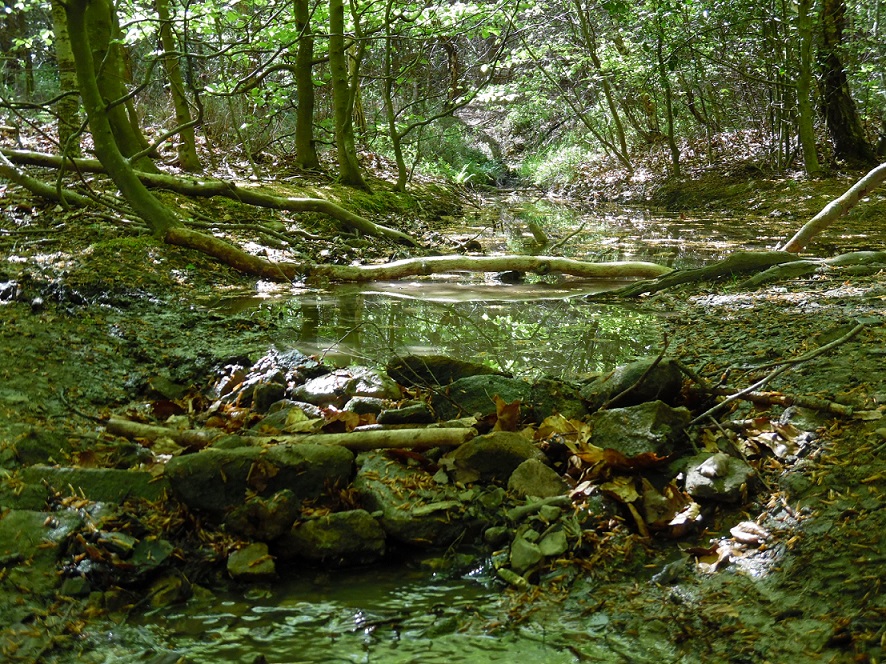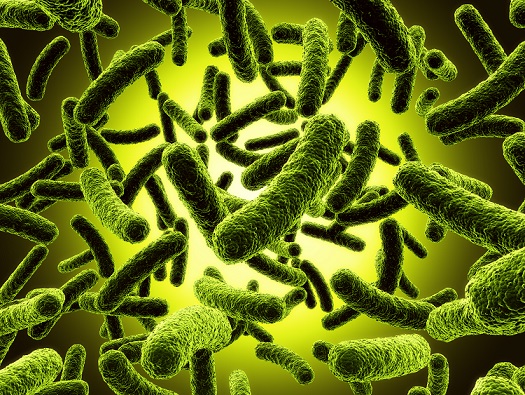 Slowly but surely, antibiotics and accutane are being drowned by an avalanche of unstoppable natural weapons. Zinc, vitamin E, green tea, and grapeseed oil are curing acne with no end in sight and new discoveries are flooding in weekly. The end is nigh for pharmaceutical acne chemicals and another nail in their coffin is topical bacteria.
Slowly but surely, antibiotics and accutane are being drowned by an avalanche of unstoppable natural weapons. Zinc, vitamin E, green tea, and grapeseed oil are curing acne with no end in sight and new discoveries are flooding in weekly. The end is nigh for pharmaceutical acne chemicals and another nail in their coffin is topical bacteria.
The traditional instructions with bacteria are to fear it, yet recently, the famously healthy probiotic bacteria of yogurt was found to increase skin moisture and hydration when applied topically. Even more obscurely, a bacteria strain called Bifidobacterium breve in fermented soy milk can increase hyaluronic acid levels in the skin.
Dedicated products are springing up, and the most popular class is currently bifidobacterium, but another is ammonia oxidising bacteria.
AOB is a diverse bacterial class, which is widespread in Planet Earth’s soil, and very interesting indeed in human skin. The hype train has been accelerating for years now and just last month, another excellent study came out.
A new discovery
The author was AOBiome, a new biotech company dedicated to curing skincare woes through topical bacteria application. Their results seem outlandish, yet the methods were perfect.
Firstly, the main characteristic of AOB is consuming ammonia, commonly in soil, but also human sweat. In its place, the bacteria churns out by-products such as nitric oxide and nitrites.
AOB does not always populate human skin, but is totally harmless when it does. Anyway, this October 2017 study was double-blind, comparative, and placebo controlled. It analysed a specific strain of ammonia oxidising bacteria called nitrosomonas eutropha. A control was also tested. 358 human patients with mild to moderate acne vulgaris were tested.
After 12 weeks, the topical bacteria reduced acne, as judged by the widely used Investigator’s Global Assessment of acne severity (IGA), by 2 points. There was a highly significant reduction in inflammatory acne lesions. Not a single side effect was observed, and the control group experienced no improvements.
Read Annihilate Your Acne – get the greatest diet ever for clear and radiant skin
Over those 12 weeks, the bacterial strain was confirmed to have inhabited and populated their skin. The improvements in acne closely correlated to the spread of this little known strain. The generation of nitric oxide and nitrites as byproducts of ammonia consumption was said to be responsible.
AOBiome also released a study 3 years ago, slightly smaller with just 24 human subjects, but equally promising. The nitrosomonas eutropha was extracted from soil samples; once more, a group applied live bacteria while another applied a placebo. Neither group had any AOB on their skin at the study’s outset. After 1 week, the bacteria group’s skin was inundated with AOB. Their skin condition improved significantly, and in close correlation with AOB popualtions.
What was vague were the specific improvements. Was it skin tone, skin smoothness, or pimples? That’s why for 3 years, we’ve been waiting for an actual study on acne. Last month, it finally arrived.
The story actually dates back over a decade, however. It all started with AOBiome founder Dr David Whitlock, AKA “the man who last showered 12 years ago”. Like the popular caveman regimen of today, Whitlock gave up showering and bathing, theorising that regrowth of bacteria on the skin would actually improve his hygiene.
He did notice improvements, and through his research, connected them to the nitric oxide and nitrites generated by AOB. He thus invented his own homebrew AOB probiotic. After spreading the word to his equally astonished friends, and handing them the prebiotic, they eventually helped Dr Whitlock to start AOBiome and bring the benefits to the masses.
The key players
The key process with AOB is the consumption of ammonia and its replacement with nitric oxide and nitrities. So what’s the connection to acne?
Ammonia – a chemical found naturally in human sweat. Produced from the breakdown of amino acids in the body. Sweat which is particularly ammonia-laced smells especially pungent. Ammonia’s replacement with nitric oxide is key, but removing ammonia is also beneficial, as the chemical is alkaline. Your skin is designed to be mildly acidic, with an average PH of 4. A lower pH equals less irritation, more collagen, and even less acne bacteria, as it enjoys higher PHs the most.
Nitric oxide – a gas which primarily dilates blood vessels and controls blood pressure, but is promising for acne. Back in 2015, a biotech company discovered that nitric oxide nanoparticles killed p.acnes bacteria highly effectively, but only on the skin’s surface. Localised nitric oxide is thus what we’ve been looking for since then. Sunlight is the strongest confirmed strategy, as UV radiation stimulates a localised burst of nitric oxide the moment it touches your skin. But with ammonia oxidising bacteria, we may have another.
Nitrites – chemicals used to cure bacon and ham. Can be natural, sourced from celery or spinach, or artificial chemicals. Nitrites also have antibacterial properties against p.acnes bacteria.
Next: the 6 vitamins and minerals which can massively reduce acne
AOB’s interesting gimmick is that it naturally occurs in soil. You might know that children who live rurally, and play outdoors in the soil with little thought for cleanliess, develop much stronger immune systems later in life.
Bacterial enrichment is responsible, and AOB is one of the those beneficial strains. Could the frequently amazing skin of rural dwellers also be down to AOB exposure? Possibly. AOB in soil might even help the traditional societies around the world with no acne.
Ammonia oxidising bacteria has no confirmed downsides on human skin. The whole AOB subsets lacks the enzymes necessary to act like a parasite and digest animal tissues for its own gain. The only component of human skin they can digest is ammonia. Not a single side effect has been observed from human AOB colonies. Logically, AOB is so widespread in soil that it must be safe.
Revelations for your acne strategy
 The discovery of AOB’s powers is extremely promising in itself. Normally with a topical treatment, you are merely supplementing your more important dietary strategies.
The discovery of AOB’s powers is extremely promising in itself. Normally with a topical treatment, you are merely supplementing your more important dietary strategies.
Aloe vera compliments an anti-inflammatory diet, grapeseed oil adds to the vitamin E of your lunchtime broccoli, etc. AOB is different, because thanks to modern society, some humans lack any AOB strains in their skin at all. You are adding in an acne-clearing agent that was never there to begin with.
Equally interesting though, is the other implications this raises. According to Dr Whitlock, never showering is smart because water literally rips the biofilm off bacteria and kills it. I still shower, and this seems over-the-top. Prehistoric humans surely swam in lakes, and crossed rivers during their exploration. Island societies would have swam in the sea for their fish, day in day out.
What you should definitely do is minimise any harsh antibacterial weapons. With more discoveries like this appearing constantly, you should always approach your skin flora wisely. Benzyl peroxide can indeed clear acne, but only by blasting p.acnes bacteria off the face of the earth. Other bacteria are not safe. The same applies to chlorine, triclosan in cosmetics, facial cleansers, and particularly, antibiotics.
The 7 greatest topical treatments for naturally clear skin
Whether these villains specifically affect AOB is a mystery. But it’s highly likely that our modern reliance on cosmetics and personal care items is why healthy AOB populations are so rare, and perhaps why acne is common. It’s 99.99% likely that new roles of bacteria in acne prevention will be uncovered soon.
Another mystery this helps to unravel is sweat. Why some runners and cyclists break out in a million pimples from heavy exercise while some believe that sweat enriches their skin.
Sweat can potentially help most people’s acne, since it contains an antibiotic called dermcidin which p.acnes bacteria is very sensitive to. However, athlete to athlete variations in AOB populations could explain the difference. Maybe field athletes or rugby players who routinely fall and roll around in the mud are less vulnerable to acne whilst dripping in sweat during a summer match, thanks to AOB exposure.
Meanwhile, gym dwellers would never be exposed to AOB and perhaps that’s why they woefully break out. This is just one factor, but an interesting and unconsidered one.
Conclusion
The great news is that our modern societies are sterile. We have an obsession with killing bacteria even when it’s harmless. City dwellers are exposed to no AOB. Compared to prehistoric man, neither are villagers. Even in more recent generations, far more families were farmers and exposed to soil constantly.
How on earth is that great news? Simply because if you are AOB-deficient, as is likely, you have an opportunity to advance.
Right now there’s a spray called Mother Dirt made by AOBiome. Don’t worry, it doesn’t literally fire soil at your face, but it is loaded with two strains of ammonia oxidising bacteria. Nitrosomonas eutropha, the strain tested in both studies, and nitrobacter winogradski, also proven to churn out nitric oxide.
AOBiome also sells a line of facial cleaners with missing chemicals, to avoid killing existing AOB. There is another product available though. Soil, although to confirm that your skin is inundated with the bacteria, the spray is a more efficient choice. Getting more exposure to soil is a long term strategy, to provide both AOB and a variety of unknown bacteria.
We need to wait and see what the future holds for ammonia oxidising bacteria, but without a doubt, it illustrates how much potential there is with beneficial skin bacteria.
NEXT: the ultimate diet for clearing acne permanently
Thanks for reading!
Can we just rub some forest soil on our face every now and then and wash it off in the river instead of buying these products? Or would it not have a similar effect at all?